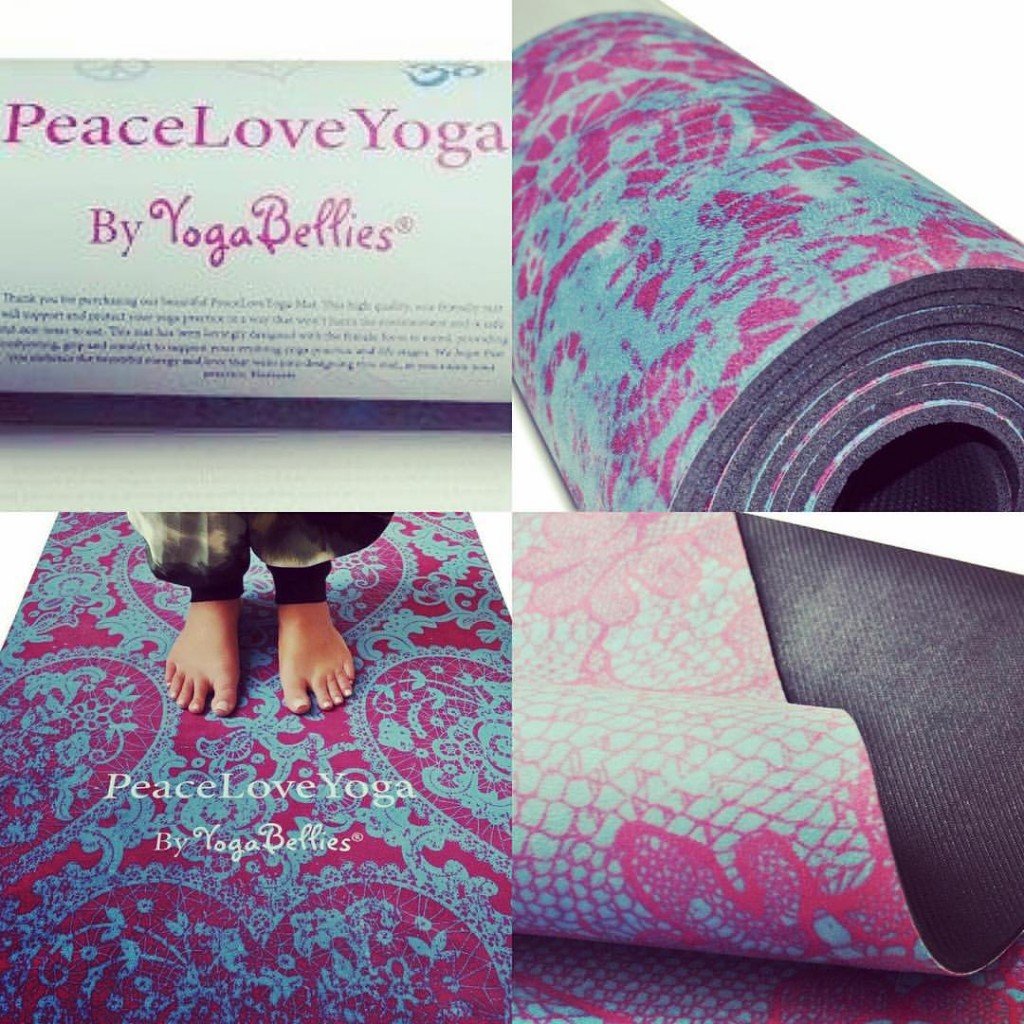
When most people start out with yoga, they tend to use the smelly studio mats provided in class (a haven for disease) or they buy a cheap and nasty exercise mat from Tesco, around the £10 mark. If you are still using a cheapy yoga mat it’s time to think again. Polyvinyl chloride (PVC), is one of the most toxic plastics, and you are exposing your body to vinyl chloride, a known carcinogen, as well as dioxins, phthalates and other scary substances that cause cancer and other developmental issues. These mats typically do not have a long lifespan, and when you toss them out, they go to a landfill where they will remain forever because they are not biodegradable. Yikes!
Even before I started teaching yoga, I learned the value of a good yoga mat, not only for my yoga practice, but for my health and my contribution to the environment. Why would you practice on a yoga mat that was damaging our planet and our health with every breath and every asana!
1. What’s it MADE of?
Most yoga mats are made of PVC or TPE. TPE is often seen as the ‘eco choice’ but this is not actually the case. According to Wikipedia, TPE (Thermoplastic elastomers) is a mix of rubber and plastic. In other words, TPE is a blend of synthetic materials that have not been disclosed, have not been studied, and have not been proven safe. So far TPE not looking so ‘friendly’
A truly eco-friendly choice for your yoga mat, is natural rubber. As an added bonus, natural rubber has better cushion and resilience, making it more comfortable. Being tapped from rubber trees, natural rubber is a renewable resource making rubber mats green and non-toxic. Another benefit of rubber is that you don’t have that ‘toxic smell’ that you get from PVC. Rubber mats are also great if you are pregnant or practice yoga with your baby or child. Other earth-friendly options include jute, and organic cotton (which means the fabric is not treated with synthetic finishes during manufacturing) but rubber has by far the best grip and durability.
2. How THICK is it?
Everyone likes a different mat thickness, so it’s best to think about what your practice involves. Headstand is the perfect way to test out your mat’s thickness. A standard yoga mat is about 1/8 inch thick, while the thickest swell up to 1/4 inch. There are also wafer-thin yoga mats, often billed as “travel yoga mats,” that are a mere 1/16 inch thick. They fold easily and don’t weigh much, making them a cinch to fit in a suitcase. A decent amount of cushion helps maintain better balance so you can really sink into flows comfortably.

3. What does it FEEL like?
Ideally, a yoga mat will have a soft AND sticky surface, but this is hard to come by. This means that you will be able to grip in downward dog, but won’t be stuck to it in Savasana. Some like a smooth, easy-gliding experience, while others want some extra grip. PVC, rubber and polyurethane mats are usually free of added texture, while Jute and cotton mats naturally have a bit more texture to them that give added traction. Mats with tactile patterns may need to be cleaned more often and thoroughly since dirt, grime and sweaty can take hold in any grooves or crevices. Mats with a smooth, durable surface and a pretty pattern are perfect and will wear well.
4. What does it LOOK like?
Let’s not pretend that we don’t care what our yoga mat looks like 🙂 There is nothing lovelier than a gorgeous new yoga mat. How many times have you ooh-ed and aah-ed over someone’s mat in class? Looks aren’t everything, but if you can get a sticky, eco-friendly, supportive and comfortable mat that looks gorgeous too, why wouldn’t you? Choose a design that resonates with you and your practice and think about the energy put into the mats creation.
Over the past few years, I have literally, searched the world looking for this mat and when I found it I decided to have them created to share with the world. The PeaceLoveYoga Mat by YogaBellies is a high quality, eco-friendly, natural rubber mat and will support and protect your yoga practice in a way that won’t harm the environment and is safe and non-toxic to use.
This mat has been lovingly designed with the female form in mind, providing cushioning, grip and comfort to support your evolving yoga practice and life stages. We hope that you embrace the beautiful energy and love that went into designing this mat, as you enjoy your practice.


0 Responses on Things to Look For When Buying a Yoga Mat"